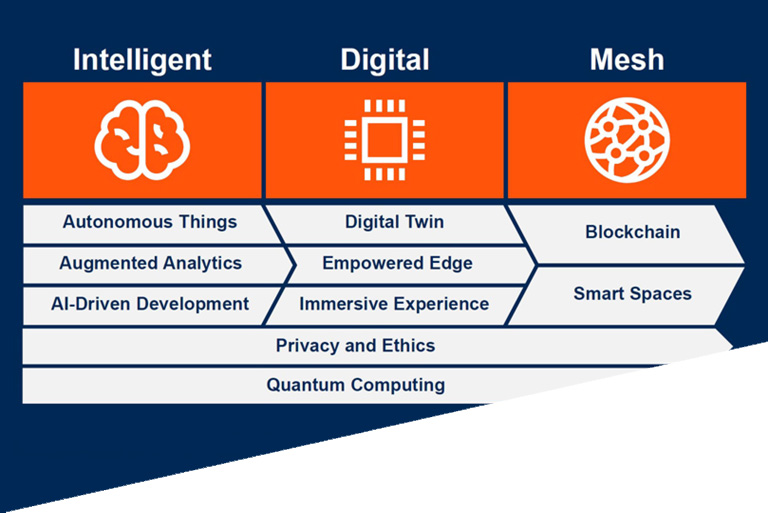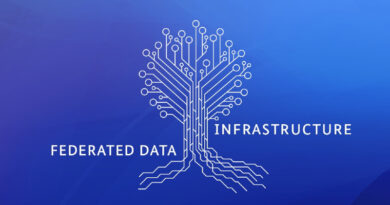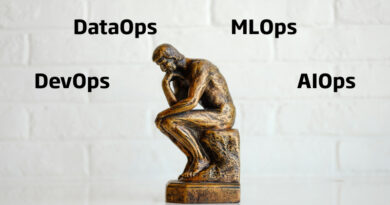Top 10 Strategic Technology Trends for 2020, according to Gartner (Part II)
Our previous post was focused on strategic technology trends for people.
Today we will analyze trends focused on Smart Spaces (Powered Edge, distributed Cloud, standalone Things, practical Blockchain and AI Security) and Onesait Platform’s value proposition:
TREND #6 EMPOWERED EDGE

Edge Computing is an architectural model where information processing, content gathering and delivery are placed closer to the information sources, aiming to reduce latency. This paradigm applies especially in IoT. This trend reflects how the deployment of this model is increasing every day, composing the basis of intelligent spaces where devices enable the deployment of key services to people.
In Onesait Platform, we have always believed in Edge Computing, so much so that the Onesait Platform Things distribution has the Edge Engine, that allows to create systems with this architecture:

You can find more information in our Developer Portal.
TREND #7: DISTRIBUTED CLOUD

The Distributed Cloud trend alludes to the distribution of public Cloud services to locations outside the Cloud provider’s data centers, but still controlled by the Cloud provider.
In the distributed Cloud, the Cloud provider is still responsible for all aspects of the Cloud service architecture, delivery, operations, governance and upgrades.
The evolution from the centralized public Cloud to the distributed public Cloud marks the beginning of a new era in cloud computing.
This allows data centers to be located anywhere, solving technical issues such as latency as well as regulatory challenges such as data sovereignty.
In Onesait Platform, we are currently experimenting with deployment of Azure Stack services, in what Azure calls Azure Services On Premises.
TREND #8: AUTONOMOUS THINGS

Autonomous things include drones, robots, ships and devices. They exploit AI to perform tasks usually performed by humans, and they include semi-autonomous to fully autonomous things.
While currently autonomous things exist mainly in controlled environments, such as in a mine or a warehouse, they are already evolving to include public open spaces.
Autonomous things will also move from stand-alone meshes to collaborative meshes, such as the swarms of drones used during the 2018 Winter Olympics.
TREND #9: PRACTICAL BLOCKCHAIN

At this point, everyone knows about Blockchain – a type of distributed ledger, a chronologically ordered list of irrevocable and immutable transactional records that are cryptographically signed and shared by all participants in a network.
Blockchain is also used to track assets back to their source, which is beneficial for traditional assets, but also paves the way for other uses, such as tracking food-borne diseases back to the original supplier. It also allows two or more unknown parties to interact safely in a digital environment and exchange value without the need for a centralized authority.
But really, as of today, Blockchain remains an immature technology for many business implementations due to a variety of technical issues including poor scalability and interoperability.
Current practical Blockchains take a practical approach and implement only some of the elements of a complete Blockchain chain by making the ledger independent of individual applications and participants and replicating the ledger across a distributed network to create an authoritative record of significant events. Everyone with authorized access see the same information, and integration is simplified by having a single, shared blockchain. Consensus is handled through more traditional private models.

In Onesait Platform, we have experience in the integration with Blockchain to certify, for example, that a vote, once cast, is not altered. The integration is done very easily through the FlowEngine:

TREND #10: AI SECURITY

Trends such as hyperautomation and autonomous things offer opportunities for transformation in the business world. However, they also create security vulnerabilities at new potential points of attack. Security teams must address these challenges and be aware of how AI will affect the security space.
AI security has two key perspectives:
- AI system protection: AI training data protection, training lines and ML models.
- Making the most of AI to enhance security defense: Using ML to understand patterns, detect attacks and automate parts of the cyber security processes.
Our company’s Cyber Security area is using Onesait Platform to create several solutions like this for the detection of fraud patterns.
We hope you have found these 2020 developments to be interesting. If you haven’t read it already, we strong recommend that you take a look at the first five trends we published last week.




